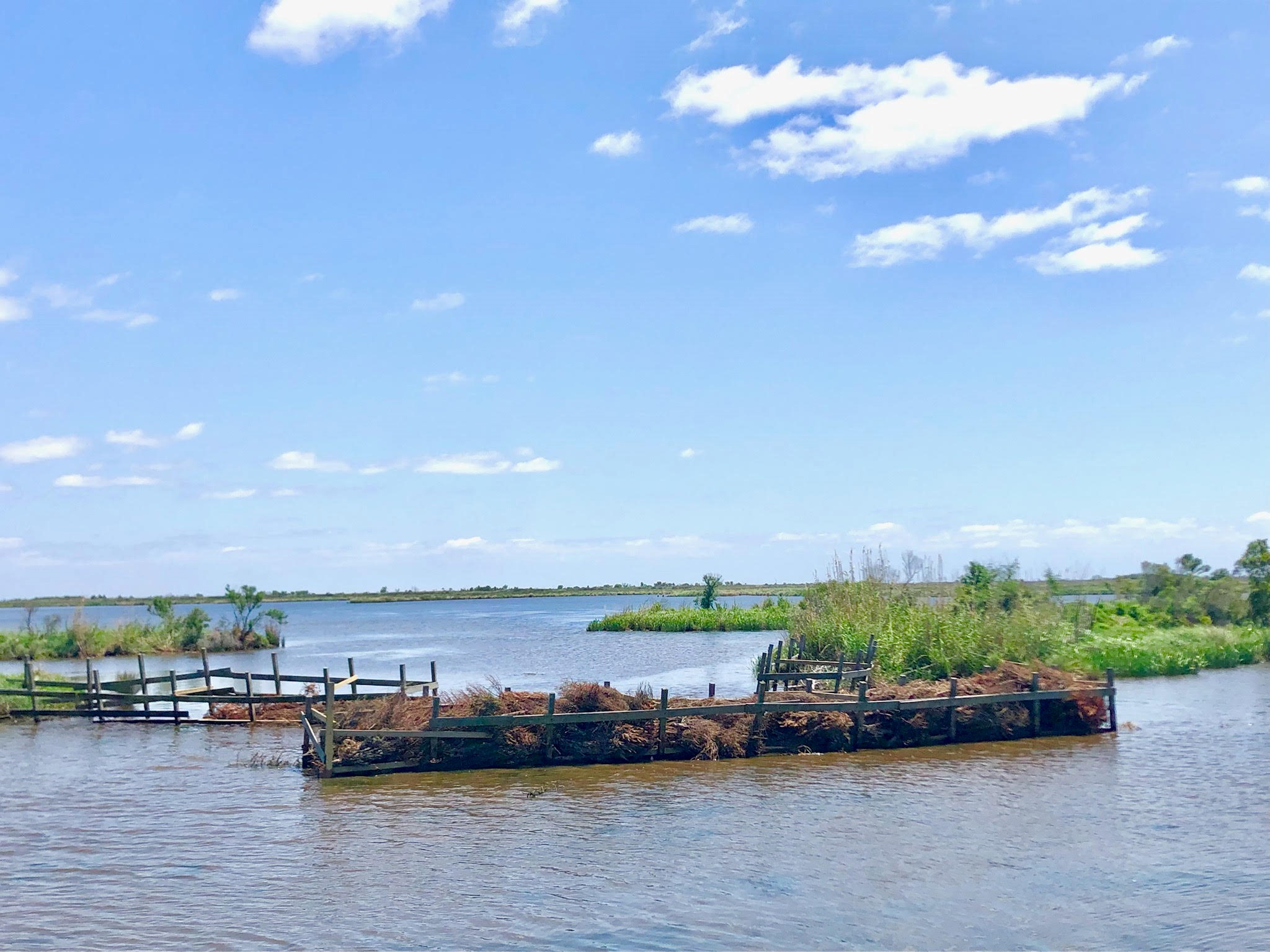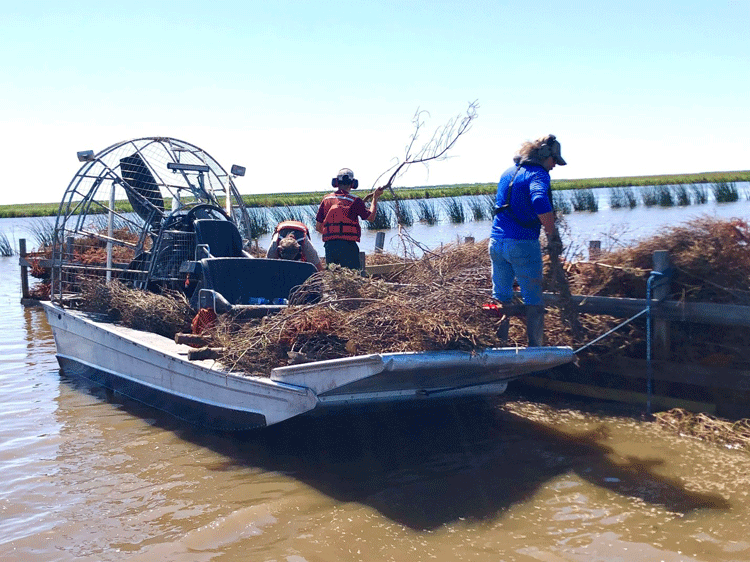A Christmas 'Gift' to Louisiana Wetlands
APRIL 25, 2022 – OR&R’s Emergency Response Division works very closely with our state and federal natural resource trustees in southern Louisiana, often coordinating very closely during oil spills that threaten trustee resources and determining the cleanup strategies that offer the best protection for the environment. Occasionally, ERD receives the very special opportunity to go beyond our oil spill response role and we are invited to assist our partners with restoration of their important parks and refuges.
Louisiana is facing serious erosion of its coastline. As reported by Louisiana Sea Grant, “More than 35 square miles of valuable wetlands are washed away each year by coastal erosion.” The loss of this wetland can be attributed to natural erosion, navigation channels, saltwater intrusion, and herbivory.
On April 18, 2022, ERD Scientific Support Coordinator Brandi Todd and Regional Response Officer Kate Mitchell of New Orleans were asked to assist U.S. Fish and Wildlife Service (USFWS) in an effort to restore some of this lost wetland. ERD joined a number of partners—USFWS, Louisiana Department of Wildlife and Fisheries, and Friends of Louisiana Refuges—in Big Branch Marsh National Wildlife Refuge to place recycled Christmas trees within the refuge in a bid to restore lost marshland.
Past tropical storms and heavy rainfall events have dramatically changed the landscape in Big Branch. This restoration project focused on an area where the eroding shoreline resulted in a wider “cut,” or channel, through the marsh. Collectively, our task was to fill previously constructed wooden “cribbing,” shown in the photos, with a mountain of donated dead Christmas trees. To accomplish this, participants loaded dead trees onto the front of airboats; navigated through the refuge to the cribbing, previously constructed by USFWS; and heaved the trees inside, occasionally compressing the trees to pack more in.
The line of trees work to reduce the wave fetch in the immediate open water area. Water is allowed to pass through the structure while sediment accumulates on the backside, resulting in the eventual creation of marshland. The widened channel will slowly fill back in as the marshland expands.
In addition to providing the benefit of new marshland, the tree-filled cribbing is an excellent spawning habitat for fish, an acceptable habitat for snakes and invertebrates, and provides birds with an opportunity to forage.
NOAA will continue supporting its federal partners as we work towards the preservation of our natural resources in the face of an unpredictable future.
For further information, contact Brandi.Todd@noaa.gov or Katherine.Mitchell@noaa.gov.
more images


 An official website of the United States government.
An official website of the United States government.



